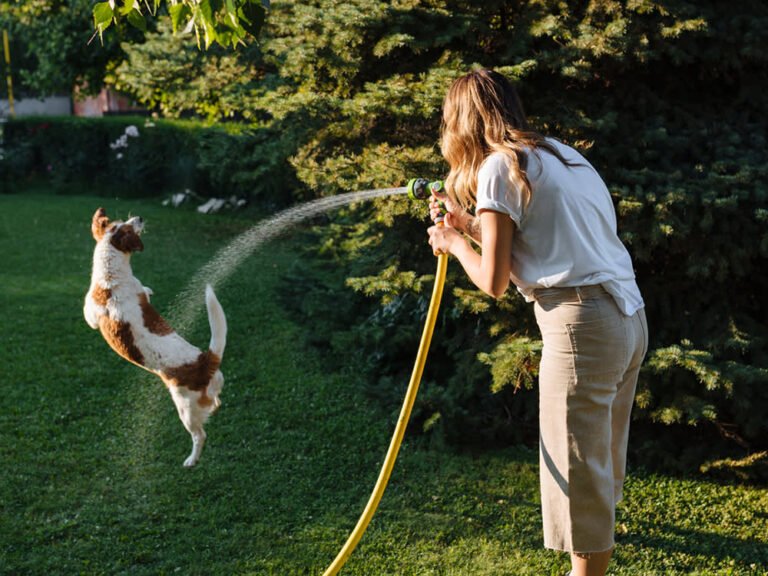There’s no doubt that winter can pose unique challenges for your furry friend. As the temperatures drop and snow begins to fall, it’s necessary to adapt your pet care routine to ensure your dog stays safe and happy during the cold months. In this ultimate guide, you’ll discover practical tips and necessary advice to keep your beloved companion warm, healthy, and content through winter’s chill. Let’s examine the world of winter pet care and equip yourself with the knowledge you need to make this season enjoyable for both you and your dog.
Understanding Winter Weather Effects on Pets
To effectively protect your dog during the winter months, it’s important to understand how various weather conditions can impact their health and happiness. Cold temperatures, snow, and ice can pose significant threats, increasing risks of hypothermia and frostbite. You must be vigilant about how your pet responds to these harsh environments and monitor their behavior for signs of discomfort.
Types of Weather Conditions
Now, let’s break down the common weather conditions and their potential effects on your pet:
| Weather Condition | Effects on Pets |
| Snow | Can lead to paw irritation and cold exposure. |
| Ice | Increases the risk of slips and injuries. |
| Cold Temperatures | Can cause hypothermia and frostbite. |
| Rain | May lead to wet fur and lower body temperature. |
| Wind Chill | Exacerbates the cold, increasing risk factors. |
Any pet can be susceptible to the dangers of winter weather, and it’s up to you to ensure they are safe and comfortable during these conditions.
Factors Influencing Pet Safety
Weather can be unpredictable, so understanding the factors influencing your pet’s safety is vital. Temperature, moisture, and breed characteristics all play a role in how your dog reacts to winter conditions. Pay attention to your dog’s breed, size, and overall health when making decisions about outside exposure and activities.
- Breed: Some dogs are naturally more tolerant of cold than others.
- Age: Puppies and senior dogs may be more vulnerable to the cold.
- Health: Dogs with health issues may require additional protection.
- Coat Type: Double-coated breeds fare better than short-haired ones.
- Duration of Exposure: Limit time spent outside in extreme conditions.
Assume that all these factors will help you determine the appropriate level of care to ensure your pet’s safety throughout the winter months.
Understanding how different elements affect your pet during winter is important for their well-being. Keep an eye on the temperature, monitor their condition, and recognize when it’s too cold for outdoor activities. Additionally, be mindful of the surroundings, including potential hazards like standing water or exposed chemicals.
- Awareness of the environment: Check for salt or antifreeze.
- Supervision during playtime: Avoid letting your dog roam unsupervised.
- Temperature readings: Use a thermometer to gauge safety levels.
- Proper clothing: Some pets may benefit from winter gear.
- Rest breaks: Ensure your dog has time to warm up regularly.
Assume that your vigilance will lead to safer winter outings and a happier, healthier pet.
Essential Winter Pet Care Tips
There’s no denying that winter can pose unique challenges for your furry friend. To ensure your dog stays safe and comfortable during the colder months, follow these imperative tips:
- Limit outdoor exposure to extreme temperatures.
- Provide a warm, dry shelter for your pet.
- Keep your dog well-groomed, especially if they have long fur.
- Monitor their paws for ice and salt irritation.
- Ensure they stay hydrated, even in colder weather.
Perceiving the signs of discomfort or distress in your dog is key to their winter well-being.
General Care Guidelines
Tips for keeping your dog content during winter include creating a cozy indoor space for relaxation and play. Incorporate daily exercise that accommodates the weather conditions, such as indoor fetch or short, invigorating walks when it’s safe outside. Be vigilant about their diet and maintain regular vet check-ups to address any seasonal health concerns.
Breed-Specific Considerations
While some dog breeds are better equipped to handle winter weather, others may require special attention. Understanding your dog’s breed can help you tailor their care effectively. For instance, breeds with thick coats like Huskies thrive in the cold, whereas short-haired breeds may struggle.
To ensure your dog’s comfort, consider their individual needs based on breed characteristics. For instance, short-haired or small breeds might benefit from doggy jackets and restricted time outdoors. On the other hand, large or fluffy breeds may enjoy extended playtime outside. Always monitor your dog for signs of cold stress and adjust their activities accordingly to keep them happy during winter’s harsh conditions.
The Step-by-Step Guide to Keeping Your Dog Warm
The winter months can pose unique challenges to your dog’s comfort and safety. Follow these steps to ensure your furry friend stays warm when the temperatures drop.
Step-by-Step Actions
| Evaluate Temperature | Check if it’s too cold for your dog, especially if they are small, old, or have short fur. |
| Provide Shelter | Ensure your dog has a warm, dry place to retreat to, indoors is best. |
| Limit Outdoor Time | Reduce exposure during extremely low temperatures or severe weather conditions. |
| Use Blankets | Offer soft blankets or dog beds that provide warmth and comfort. |
Clothing and Accessories
With winter’s chill in the air, outfitting your dog with the right clothing and accessories can make a significant difference in their comfort. Consider investing in a quality coat or sweater that fits snugly and keeps your pet warm, along with protective booties to shield their paws from cold surfaces and ice. These items not only help retain body heat but also prevent frostbite and discomfort during walks.
Safe Outdoor Practices
Even in cold weather, outdoor activities are crucial for your dog’s physical and mental well-being. To ensure safety, keep your walks shorter and monitor for signs of discomfort. Be mindful of the surfaces your dog walks on, as ice and salt can harm their paws. Always carry water for hydration and look for signs that they need to come inside, such as shivering or reluctance to continue walking.
Outdoor experiences should remain enjoyable during winter, but it’s crucial to adapt your routine. Instead of long hikes, choose shorter, brisk walks that allow your dog to stretch their legs while staying warm. Look for dog parks with designated areas for safe play that are free of ice and snow buildup. By paying attention to your dog’s energy levels and comfort, you can still enjoy the great outdoors together, no matter the weather.
Pros and Cons of Common Winter Care Products
All pet care products have their advantages and drawbacks. Understanding these can help you make informed decisions for your furry friend during winter. Below is a summary of the pros and cons of commonly used winter care products:
| Product | Pros | Cons |
|---|---|---|
| Boots | Protects paws from cold and ice | May cause discomfort if not fitted properly |
| Coats | Keeps dogs warm in harsh weather | Some dogs may resist wearing them |
| Pet-safe ice melters | Safeguards paws from harmful chemicals | Can be costly compared to regular options |
| Heated beds | Provides comfort and warmth indoors | Requires electricity and may not be portable |
| Moisturizing balms | Helps prevent cracked paws | Can be messy and need frequent reapplication |
| Paw wipes | Easily cleans paws after walks | May not be environmentally friendly |
| Dog blankets | Offers warmth and comfort | Can accumulate pet hair |
| Reflective gear | Enhances visibility during dark winter days | Can be bulky for some pets |
| Winter collars | Increases safety in low visibility | Can irritate sensitive skin |
| Sweaters | Stylish warmth solution | May not fit all body types |
Boots and Paw Protection
Protection of your dog’s paws is vital during winter months. Boots can shield your pet’s paws from ice, snow, and harmful chemicals found in de-icing products. However, it’s vital to choose the right size and style to ensure comfort. Some dogs may take time to adjust to wearing boots, while others may embrace them immediately. Always introduce them gradually to make the experience positive.
Heated Bedding and Indoor Solutions
Even in the chill of winter, your pup needs comfort and warmth indoors. Heated bedding and other indoor solutions can provide the cozy retreat your dog desires during the colder months. These options not only help maintain their core temperature but also offer a soft place to rest.
This winter, consider investing in heated bedding for your dog. These products can significantly enhance your pet’s comfort, particularly for older dogs or those with health issues, as they help soothe aching joints and muscles. Look for models with adjustable temperature settings and automatic shut-offs for safety. Additionally, combine these solutions with cozy blankets or beds to create a warm sanctuary for your furry friend throughout the winter season.
Nutrition and Hydration in Winter
Not all winter pet care is about keeping your dog warm; you also need to consider their nutritional and hydration needs during the colder months. The winter weather can affect your dog’s appetite and hydration, making it important to provide a balanced diet and plenty of fresh water to keep them healthy and energetic.
Dietary Needs
Little adjustments to your dog’s diet can make a significant difference in their winter wellness. As temperatures drop, your dog may require more calories to maintain their body heat, particularly if they spend a lot of time outdoors. Look for high-quality dog food that meets their specific needs and consult your vet about increasing their portion sizes.
Keeping Your Dog Hydrated
The lack of hydration is often overlooked in winter pet care. Just like you, your dog can become dehydrated even when it’s cold outside. They may not feel thirsty as they do in warmer months, so it’s important to encourage regular water intake.
For instance, you can place fresh water bowls in accessible areas of your home and take them with you on outdoor adventures. Make sure the water is not frozen by checking the bowls regularly. Additionally, consider adding wet food or making broths to your dog’s diet to increase their fluid intake. This way, you can help keep your furry friend happy and healthy through winter’s chill.
Recognizing Winter Health Issues in Dogs
For pet owners, understanding the unique health challenges your dog may face during winter is important for their well-being. As temperatures drop, dogs can be susceptible to various cold-related ailments. Being proactive in recognizing these issues can help ensure your furry friend remains safe and comfortable throughout the chilly months.
Common Conditions
The most common winter health issues in dogs include frostbite, hypothermia, and paw injuries from ice and snow. Frostbite typically affects the ear tips, paws, and tail, while hypothermia occurs when your dog gets too cold and struggles to maintain body temperature. Additionally, ice and snow can lead to cuts or cracks in your dog’s paw pads, causing discomfort and pain.
Symptoms to Watch For
To effectively monitor your dog’s health during winter, pay attention to signs such as shivering, lethargy, or whining. These symptoms can indicate that your dog is feeling cold or uncomfortable. Be vigilant about changes in behavior or appetite as they may suggest an underlying health concern triggered by winter conditions.
Winter can bring about significant changes in your dog’s behavior and health. Watch for excessive shivering, difficulty moving, or reluctance to go outside, as these can signal discomfort or distress. Additionally, check for any signs of redness or swelling on their paws, which may indicate injuries from snow or ice. If you notice any concerning symptoms, it’s best to consult your veterinarian to ensure your dog receives the appropriate care and treatment.
To wrap up
Now that you have explored the necessary tips in ‘The Ultimate Guide To Winter Pet Care – Keeping Your Dog Safe And Happy,’ you are well-equipped to provide a safe and comfortable environment for your furry friend during the colder months. By prioritizing their health, safety, and happiness, you can ensure that your dog enjoys winter just as much as you do. Stay informed, monitor your pet’s needs closely, and make necessary adjustments to keep them thriving throughout the season.







